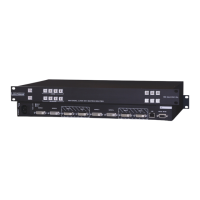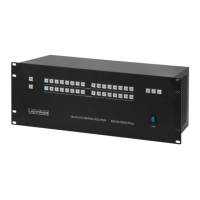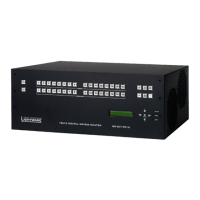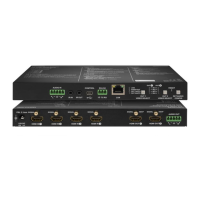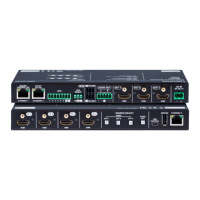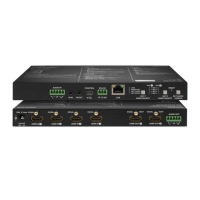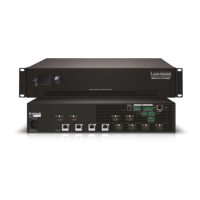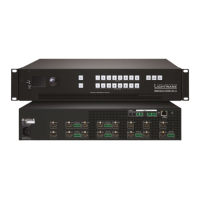Standalone MX DVI-Plus family
User’s Manual
Section 8. Programmers reference Page 67 / 89
8.7.6. View EDID validity table
Description: Shows EDID validity table, which contains information about the EDID states.
Example (MX16x16DVI-Plus)
(EV●<VALIDITY_TABLE>
)CrLf
(EV 1111111111111111111111111
1111111111111111111111111111
0000000000000000000000000000
0000000000000000010111111111
1111111000000000000000011113
111111111110000000000000000)CrLf
Legend: Response length is 164 characters. Each number represents the EDID validity
state for the corresponding memory location. The first 50 numbers (bold) are representing
the factory preset EDIDs, the second 50 numbers are representing the User saved EDIDs.
From the next 32 numbers the first 16* (italic) are showing the outputs’ EDID state, and
from the last 32 numbers the first 16* (bold and italic) are showing the emulated EDIDs on
the inputs.
* The number depends on the matrix size. (16, 12 or 9)
If a changed EDID is queried by the {wh} command (see the next section), its value returns
to ‘1’.
Explanation: There is one ‘3’ in the table on the 137
th
position. This means that the
emulated EDID on input 5 is changed since the last EDID query on that port.
8.7.7. View EDID header
Description: EDID_HEADER consists of 3 fields:
PNPID code The three letter abbreviation of the manufacturer
Preferred resolution The resolution and refresh rate stored in the preferred detailed
timing block.
Name The name of display device stored in product descriptor.
(EH#<loc>●
<EDID_HEADER>)CrLf
(EH#104 NEC 1280x1024@60
LCD1970NXp)
Explanation: Shows the EDID from memory location 104.
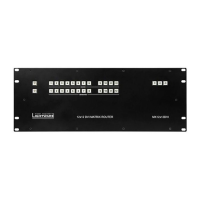
